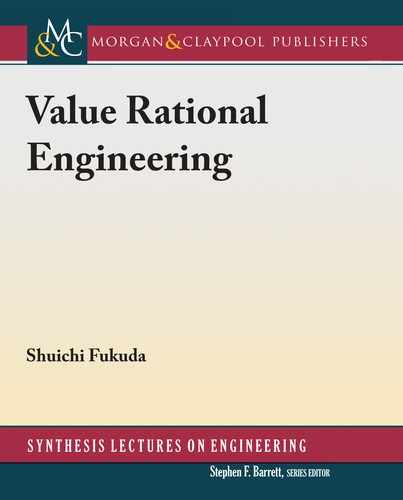iv
MATLAB for Engineering and the Life Sciences
Joseph V. Tranquillo
2011
Systems Engineering: Building Successful Systems
Howard Eisner
2011
Fin Shape ermal Optimization Using Bejan’s Constructal eory
Giulio Lorenzini, Simone Moretti, and Alessandra Conti
2011
Geometric Programming for Design and Cost Optimization (with illustrative case study
problems and solutions), Second Edition
Robert C. Creese
2010
Survive and rive: A Guide for Untenured Faculty
Wendy C. Crone
2010
Geometric Programming for Design and Cost Optimization (with Illustrative Case Study
Problems and Solutions)
Robert C. Creese
2009
Style and Ethics of Communication in Science and Engineering
Jay D. Humphrey and Jeffrey W. Holmes
2008
Introduction to Engineering: A Starter’s Guide with Hands-On Analog Multimedia
Explorations
Lina J. Karam and Naji Mounsef
2008
Introduction to Engineering: A Starter’s Guide with Hands-On Digital Multimedia and
Robotics Explorations
Lina J. Karam and Naji Mounsef
2008
CAD/CAM of Sculptured Surfaces on Multi-Axis NC Machine: e DG/K-Based
Approach
Stephen P. Radzevich
2008
v
Tensor Properties of Solids, Part Two: Transport Properties of Solids
Richard F. Tinder
2007
Tensor Properties of Solids, Part One: Equilibrium Tensor Properties of Solids
Richard F. Tinder
2007
Essentials of Applied Mathematics for Scientists and Engineers
Robert G. Watts
2007
Project Management for Engineering Design
Charles Lessard and Joseph Lessard
2007
Relativistic Flight Mechanics and Space Travel
Richard F. Tinder
2006
Copyright © 2018 by Morgan & Claypool
All rights reserved. No part of this publication may be reproduced, stored in a retrieval system, or transmitted in
any form or by any means—electronic, mechanical, photocopy, recording, or any other except for brief quotations
in printed reviews, without the prior permission of the publisher.
Value Rational Engineering
Shuichi Fukuda
www.morganclaypool.com
ISBN: 9781681734057 paperback
ISBN: 9781681734064 ebook
ISBN: 9781681734071 hardcover
DOI 10.2200/S00865ED1V01Y201807ENG033
A Publication in the Morgan & Claypool Publishers series
SYNTHESIS LECTURES ON ENGINEERING
Lecture #33
Series ISSN
Print 1939-5221 Electronic 1939-523X

Value Rational Engineering
Shuichi Fukuda
Adviser to System Design and Management Research Institute of Keio University
Member of the Engineering Academy of Japan
SYNTHESIS LECTURES ON ENGINEERING #33
C
M
&
cLaypoolMorgan publisher
s
&

ABSTRACT
Early in the 20th century, our world was small and closed with boundaries. And, there were
no appreciable changes. erefore, we could foresee the future. ese days, however, we could
apply mathematical rationality and solve problems without any difficulty.
As our world began to expand rapidly and boundaries disappeared, the problem of
bounded rationality emerged. Engineeres put forth tremendous effort to overcome this diffi-
culty and succeeded in expanding the bounds of mathematical rationality, thereby establishing
the “Controllable World.”
However, our world continues to expand. erefore such an approach can no longer be
applied. We have no other choice than “satisficing” (Herbert A. Simon’s word, Satisfy + Suf-
fice [2]).
is expanding open world brought us frequent and extensive changes which are unpre-
dictable and diversification and personalization of customer expectations. To cope with these
situations, we need diverse knowledge and experience. us, to satisfy our customers, we need
teamwork.
ese changes of environments and situations transformed the meaning of value. It used
to mean excellent functions and exact reproducibility. Now, it means how good and flexible we
can be to adapt to the situations. us, adaptability is the value today.
Although these changes were big, and we needed to re-define value, a greater shift in
engineering is now emerging. e Internet of ings (IoT) brought us the “Connected Society,”
where things are connected. ings include not only products, but also humans.
As changes are so frequent and extensive, only users know what is happening right now.
us, the user in this Connected Society needs to be a playing manager—he or she should manage
to control the product-human team on the pitch.
Moreover, this Connected Society will bring us another big shift in engineering. Engi-
neering in this framework will become Social Networking, with engineering no longer devel-
oping individual products and managing team products.
e Internet works two ways between the sender and the receiver. Our engineering has
ever been only one way. us, how we establish a social networking framework for engineering
is a big challenge facing us today. is will change our engineering. Engineers are expected to
develop not only products, but also such dream society.
is book discusses these issues and points out that New Horizons are emerging before
us. It is hoped that this book helps readers explore and establish their own New Worlds.
KEYWORDS
value rational design, perception, intrinsic motivation, holistic approach, atmo-
sphere, psychological flow
..................Content has been hidden....................
You can't read the all page of ebook, please click here login for view all page.
